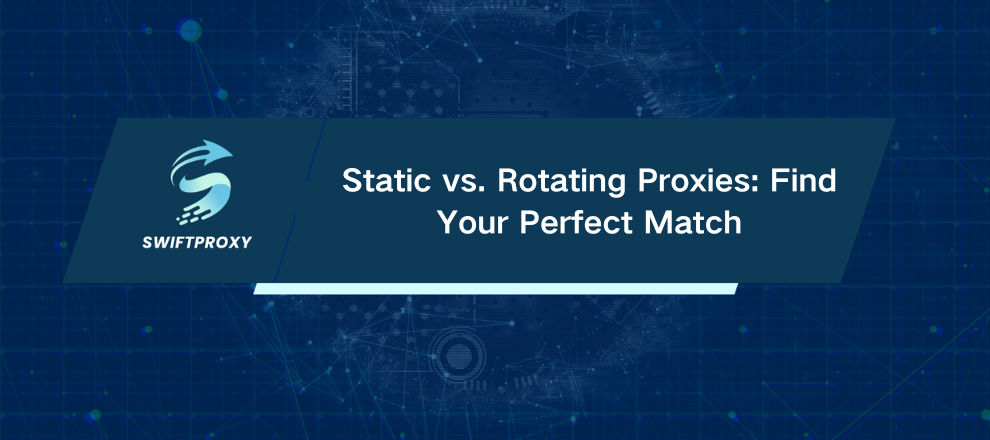Static vs. Rotating Proxies: Find Your Perfect Match

You're navigating a sea of proxies—static, rotating, datacenter, residential—and it's easy to get lost. However, picking the right proxy type can make or break your project. This isn't just about hiding your IP. It's about power, precision, and performance.
Let's break it down for you. Static and rotating proxies aren't interchangeable. They serve different masters. You need to know when to lock in on one IP and when to let your requests dance across a fleet of addresses. The choice impacts everything—speed, reliability, anonymity, and ultimately, your results.
What's a Static Proxy
Static proxies stick to one IP address like glue. No surprises. Every request you send comes from the exact same IP until you decide otherwise. Imagine trying to manage multiple social media accounts or maintaining a secure banking session. Changing IPs midstream? Recipe for red flags and account locks.
Types of Static Proxies:
Datacenter: Fast, reliable, cost-effective. Great for high-speed tasks where consistency matters.
ISP (Static Residential): IPs leased from real internet providers but hosted in data centers. They look authentic, so websites trust them more.
Mobile Static: Rare and pricey but perfect if you need to simulate a consistent mobile user.
Where Static Proxies Win:
Managing sensitive accounts that get suspicious with every IP change.
Maintaining a consistent identity online, reducing CAPTCHAs and verification hurdles.
Accessing geo-restricted content from a fixed location without interruptions.
The Catch: Static IPs can get flagged if overused on certain targets. Replacing them isn't always seamless. They're a powerhouse for stability but don't expect flexibility.
What's a Rotating Proxy
Rotating proxies shuffle IP addresses automatically, per request or at set intervals. Think of them as your digital crowd—constantly switching identities so no single IP sticks out.
Types of Rotating Proxies:
Residential: Rotate through a vast pool of real home IPs. They're gold for anonymity.
Datacenter: Fast rotating IPs, balancing speed with diversity.
Mobile: Rotate mobile carrier IPs, providing top-tier trustworthiness and mobility.
When to Choose Rotating:
Large-scale web scraping that demands IP variety to avoid bans.
SEO monitoring across multiple locations without hitting search engine limits.
Ad verification to check that campaigns run clean globally.
Market research gathering data from numerous sources efficiently.
Pros and Cons:
Rotation means better anonymity and fewer bans. But switching IPs can slightly slow down your connection, and shared pools sometimes bring unpredictable performance. Still, the ease of automatic IP management makes rotating proxies a smart choice for volume and stealth.
Static vs Rotating Proxies
|
Feature |
Static Proxies |
Rotating Proxies |
|
IP Address |
Fixed for all requests |
Changes automatically |
|
Use Case |
Stability and consistent identity |
High-volume, anonymous tasks |
|
Performance |
Often faster, lower latency |
Slightly variable, but generally fast |
|
Maintenance |
Manual replacement if blocked |
Automated, low maintenance |
|
Cost Model |
Per IP or per GB |
Mostly per GB, sometimes per port |
|
Flexibility |
Limited IP diversity |
High IP diversity |
When to Pick What
Need unwavering consistency for sensitive accounts or geo-access? Go static.
Running scrapers, SEO tracking, or ad verification at scale? Rotating is your best friend.
This choice isn't theoretical—it shapes your entire workflow.
Final Thoughts
Static proxies keep your digital footprint steady and secure. Rotating proxies cloak you in a shifting mask of anonymity and scale. Both have their place, but your success depends on knowing which to deploy—and when.

















































